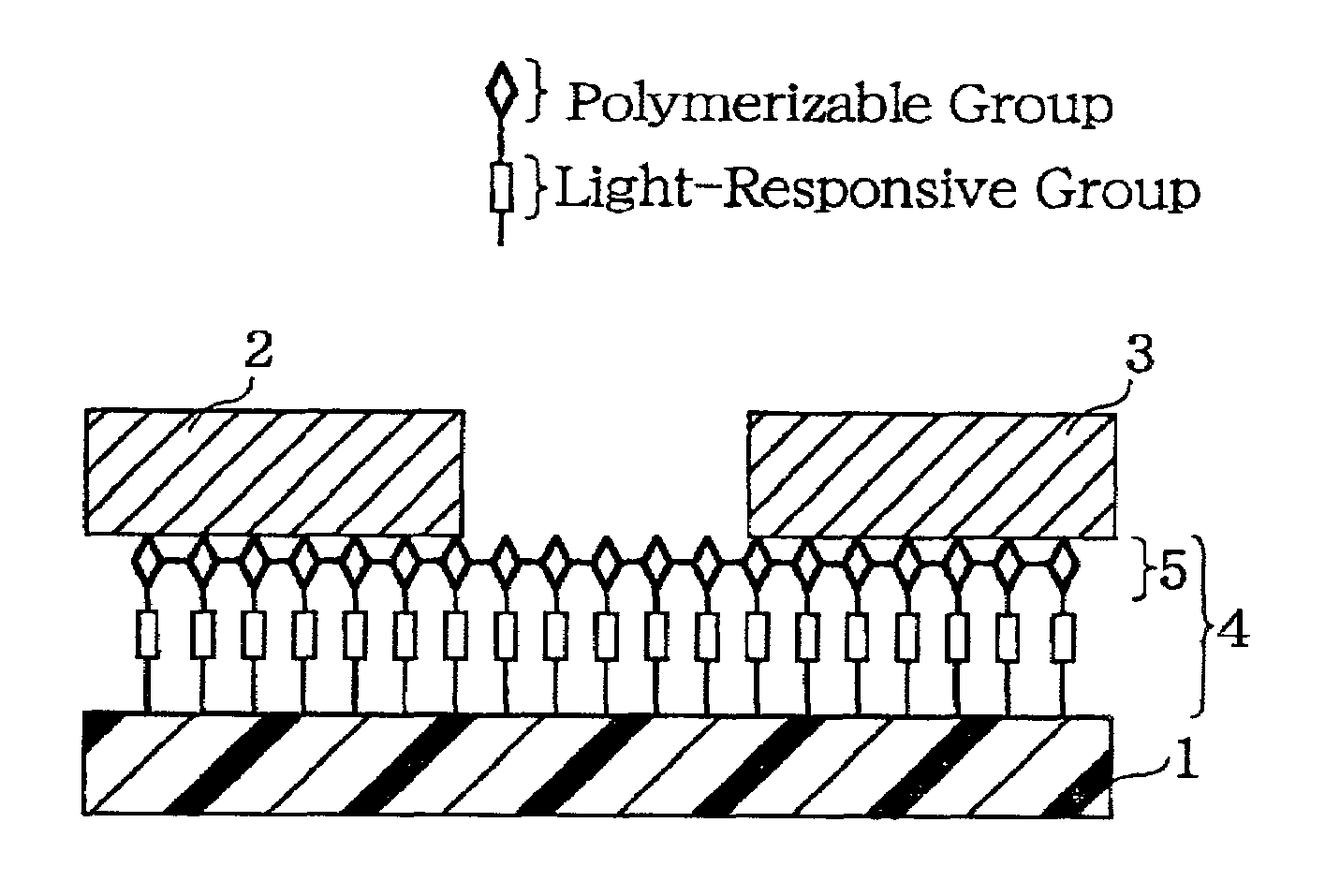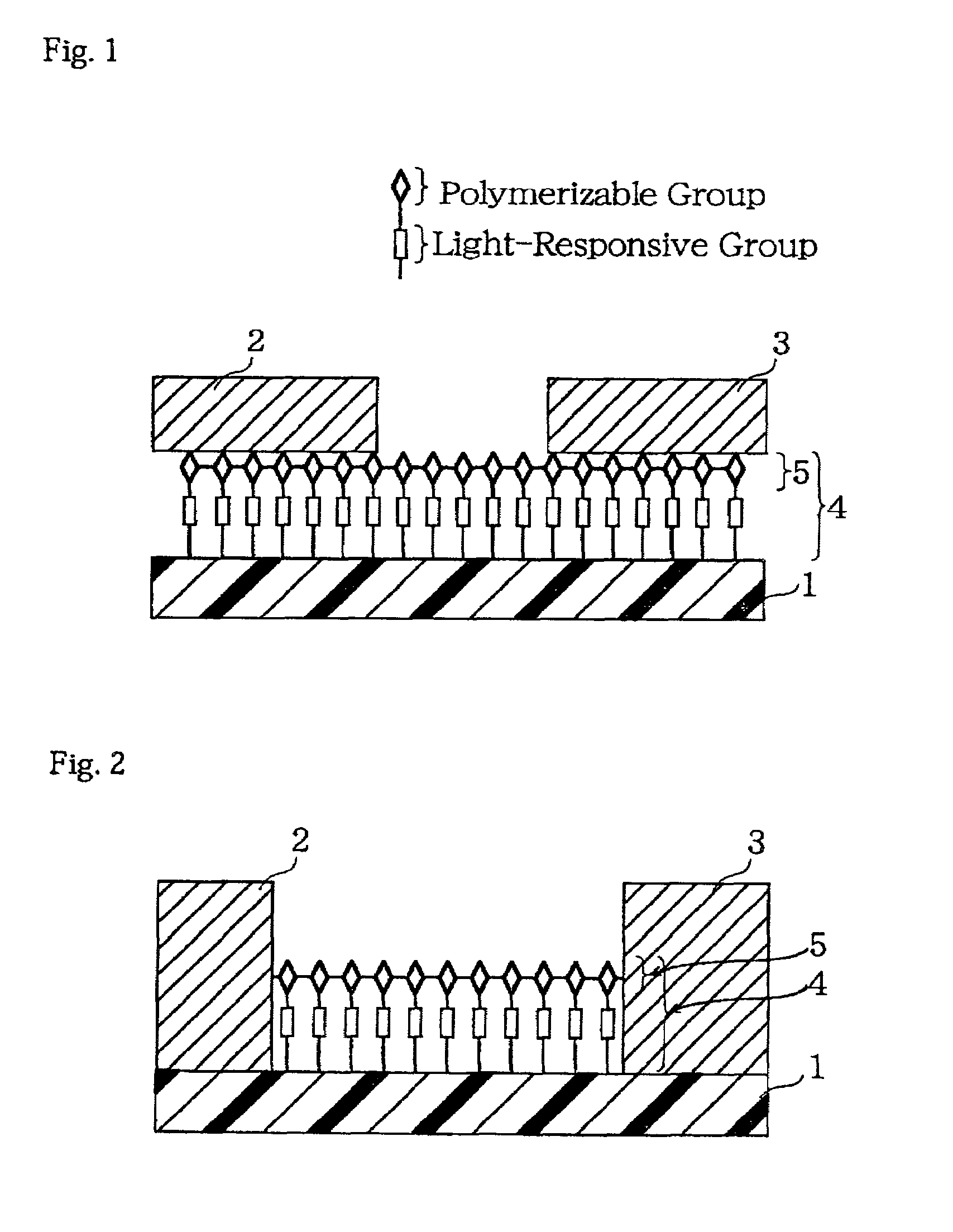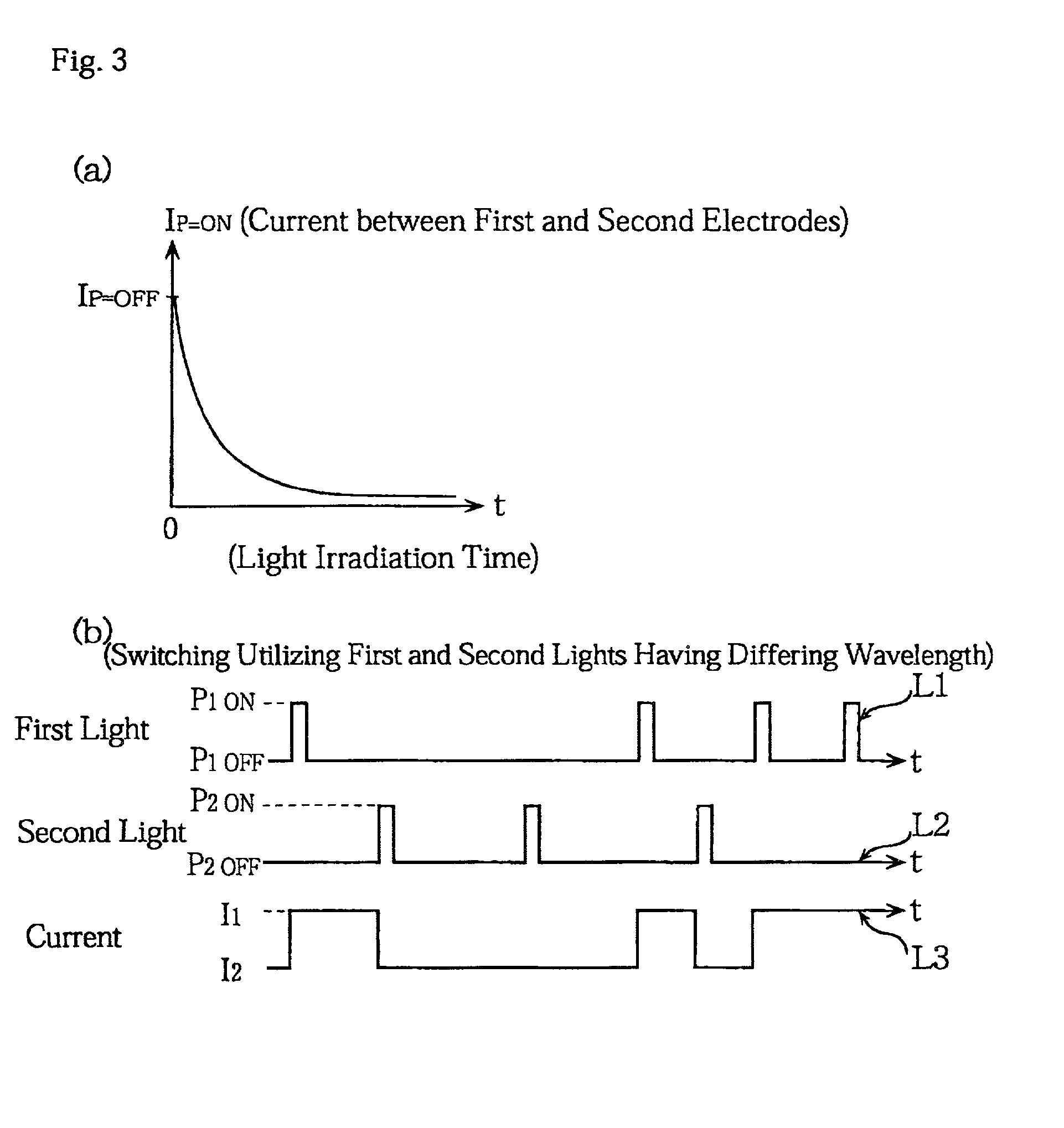Display device with organic conductive thin film having conductive network
- Summary
- Abstract
- Description
- Claims
- Application Information
AI Technical Summary
Benefits of technology
Problems solved by technology
Method used
Image
Examples
embodiment 1
[0225]The present embodiment relates to an example of a two-terminal organic electronic device of the present invention. It is described with reference to FIG. 1.
[0226]This two-terminal organic electronic device is composed of, formed on a substrate 1, a first electrode 2, a second electrode 3, and a conductive organic thin film 4 contacting and being electrically connected to a portion of the undersurfaces of both electrodes. The conductive organic thin film 4 has a conductive network 5 in which organic molecules each having a light-responsive group and a polymerizable group are linked together.
[0227]Other than the requirement of having a light-responsive group and a polymerizable group, the organic molecules used in forming the conductive organic thin film 4 do not have any particular limitations, but among the many possibilities, it is suitable to use an organic molecule represented by the general formula (1) below (a silane-based chemisorbable substance):
A-(CH2)m-B-(CH2)n-SiDpE3...
embodiment 2
[0238]The present embodiment relates to another example of a two-terminal organic electronic device of the present invention. It is described with reference to FIG. 2.
[0239]This two-terminal organic electronic device is composed of, formed on a substrate 1, a first electrode 2, a second electrode 3, and a conductive organic thin film 4 contacting and being electrically connected to side surfaces of both electrodes. The conductive organic thin film 4 has a conductive network 5 in which organic molecules each having a light-responsive group and a polymerizable group are linked together.
[0240]The two-terminal organic electronic device of the present embodiment can be produced in the following manner. First, an insulating substrate or an insulating film-covered substrate that is an insulating film formed on a surface of an arbitrary substrate is prepared, and an organic thin film comprising the above-described organic molecules is formed using a photoresist or the like (step of forming ...
embodiment 3
[0244]The present embodiment relates to a method of operating a two-terminal organic electronic device. Change in conductivity over time caused by light irradiation and the switching operations of a two-terminal organic electronic device are described with reference to FIG. 3.
[0245]FIG. 3(a) is schematic graph qualitatively showing change in conductivity as a function of irradiation time when the conductive organic thin film is irradiated with light of a constant intensity.
[0246]Considering that the amount of irradiated light is proportional to the product of the intensity of the irradiated light and irradiation time, the results are the same whether the amount of light with which the conductive organic thin film is irradiated, the irradiation time under the condition of constant light intensity, or the light intensity under the condition of constant irradiation time is plotted on the horizontal axis. In the following, the case in which the intensity of light is constant is describe...
PUM
| Property | Measurement | Unit |
|---|---|---|
| Electrical conductivity | aaaaa | aaaaa |
| Electrical conductor | aaaaa | aaaaa |
| Responsivity | aaaaa | aaaaa |
Abstract
Description
Claims
Application Information
 Login to View More
Login to View More - R&D
- Intellectual Property
- Life Sciences
- Materials
- Tech Scout
- Unparalleled Data Quality
- Higher Quality Content
- 60% Fewer Hallucinations
Browse by: Latest US Patents, China's latest patents, Technical Efficacy Thesaurus, Application Domain, Technology Topic, Popular Technical Reports.
© 2025 PatSnap. All rights reserved.Legal|Privacy policy|Modern Slavery Act Transparency Statement|Sitemap|About US| Contact US: help@patsnap.com



